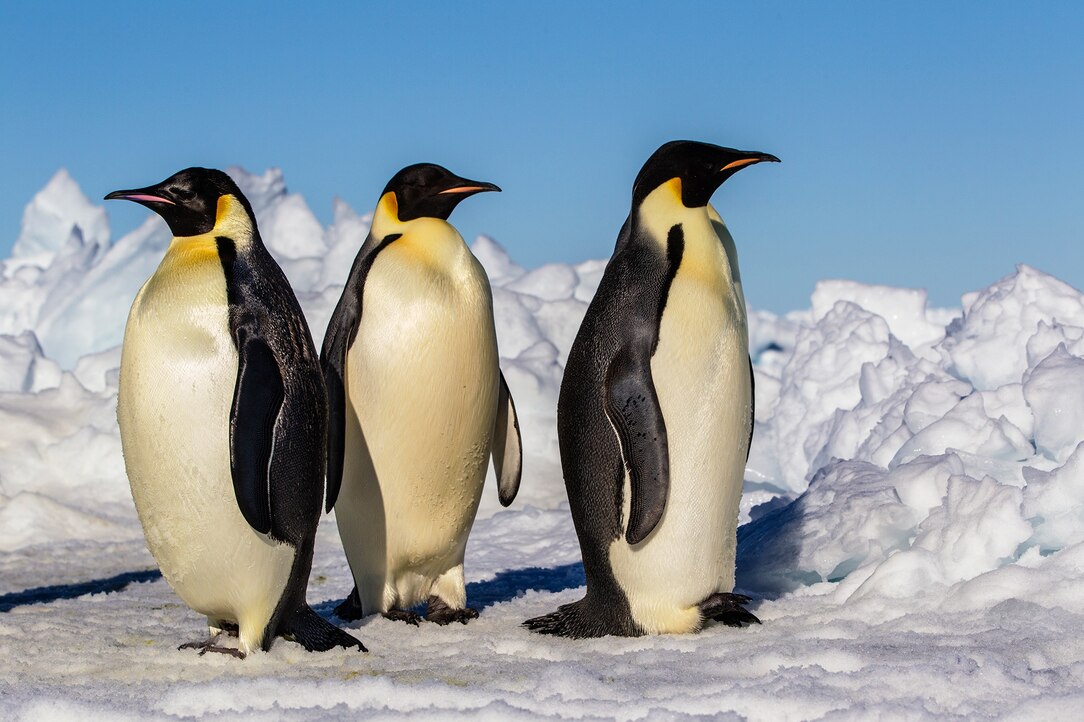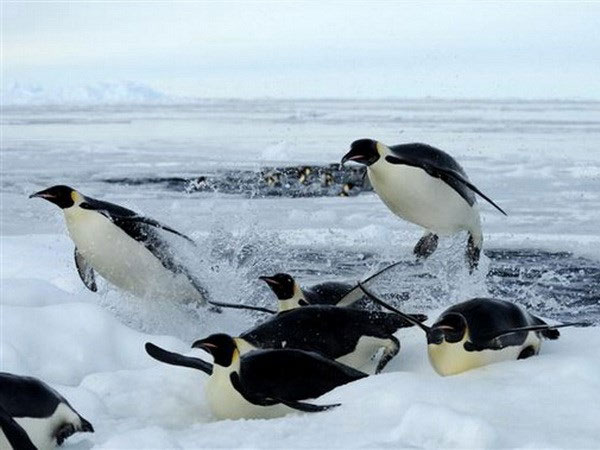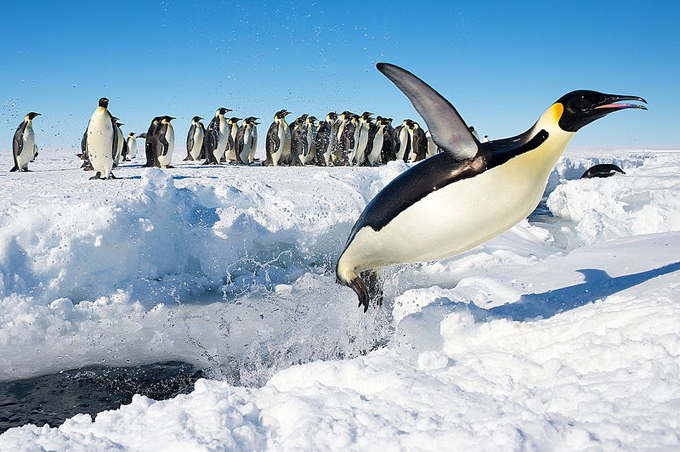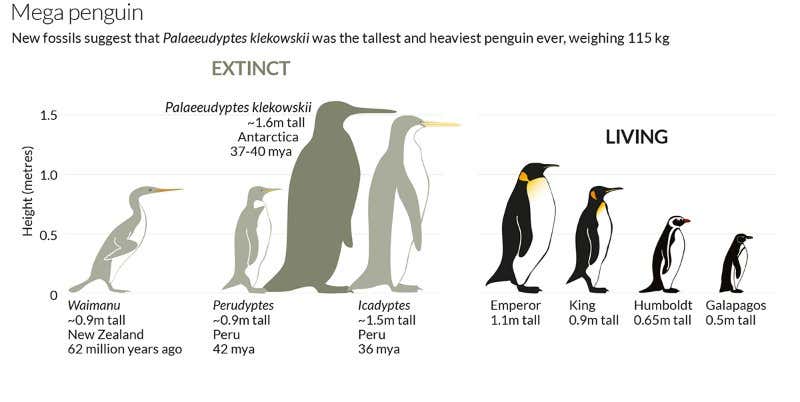Global warming could cause emperor penguins to seriously decline in number, even facing the risk of “near extinction” by 2100
This is the prediction that scientists have just made in a study published in the climate change journal Nature Climate Change.

Research by scientists at the Woods Hole Oceanographic Institution (USA) shows that the number of individuals in emperor penguin populations will decline by at least 19% by 2100.
About two-thirds of the 45 current emperor penguin populations are at risk of a decline of more than 50% of individuals, and about one-fifth of the population faces the risk of “near extinction.” “.
 Emperor penguin. (Source: emperorpenguinfacts.com)
Emperor penguin. (Source: emperorpenguinfacts.com)
The reason is that global warming causes the ice area in Antarctica to decrease. Melting ice will affect the reproductive and child-rearing activities of emperor penguins because these activities mainly take place on sea ice. Furthermore, melting ice also affects fish and krill – which are the main food of emperor penguins.

However, the degree of individual decline in emperor penguin populations varies. Penguin populations living in areas from the eastern Wedell Sea to the western Indian Ocean are most at risk of decline, while populations living in the Ross Sea will be less affected.
Scientists call for the emperor penguin to be listed as “endangered” (threatened with extinction) in the Red List of the International Union for Conservation of Nature (IUCN); At the same time, it is proposed to establish a marine conservation area in the Ross Sea and off the east coast of Antarctica, limiting tourism and fishing activities in this area to preserve the habitat of penguins. dead emperor.

Scientists affirm that this is the best solution to protect penguins in general and emperor penguins in particular.
There are currently about 600,000 emperor penguins living in Antarctica. They are the largest and heaviest of all penguins and are endemic to Antarctica.






